Entering the housing market can be challenging, especially in today’s economic climate. However, there are several alternative strategies that can help you get your foot in the door. Here are seven innovative approaches to consider:
1. Co-ownership options
Purchase property with a partner: Partnering with friends, family, or other investors can make homeownership more affordable. By sharing the costs and responsibilities, co-ownership allows multiple parties to benefit from property investment without bearing the full financial burden individually.
2. Rent-to-own agreements
Rent-to-buy deals: These arrangements allow you to rent a property with the option to purchase it after a certain period. A portion of your monthly rent payments goes towards the down payment, helping you build equity and eventually buy the home.
3. Buying in emerging areas
Invest in up-and-coming neighbourhoods: Look for properties in areas that are expected to grow and develop. These neighbourhoods often offer lower prices with the potential for significant appreciation, making it easier to enter the market and gain value over time.
4. Tiny homes
Small and affordable living: Consider investing in a tiny home, which is typically more affordable than traditional houses. These compact dwellings can be an excellent way to own property without the high costs associated with larger homes. They are also eco-friendly and can be moved if needed.
5. Real estate investment trusts (REITs)
Indirect investment: REITs, in Australia referred to as A-REITs, allow you to invest in real estate without directly purchasing a property. By buying shares in a A-REIT, you can earn dividends from real estate investments, gaining exposure to the housing market with a lower financial commitment.
6. Purchasing fixer-uppers
Renovation projects: Consider buying a property that needs significant renovation. These homes are often priced lower, and with some effort and investment in improvements, you can increase the property’s value. This strategy not only helps you enter the housing market but also allows you to customise your home to your preferences.
7. Take advantage of incentive schemes
Depending on where you plan to buy and live, there are several national, state and territory-based incentive schemes to help get you started.
These include:
- First Home Owner Grant – A scheme funded by states and territories, where eligible first-home buyers planning to live in their property get a grant between $10,000 and $30,000*.
- Help to Buy – A scheme set to arrive later this year in which the federal government offers eligible buyers a contribution of up to 40 per cent of a home’s cost, in exchange for proportional equity. Note: this scheme will be available only to a limited number of prospective homeowners.
- First Home Super Saver Scheme – A program that allows savers to build up their deposit within super while benefiting from tax concessions. Borrowers can save up to $50,000 in their super account and then withdraw it when they’re ready to apply for a loan.
- Other state and territory-based schemes – Each jurisdiction has a slightly different approach to helping first-time buyers, so it’s worth checking your state and territory websites to see what is on offer.
Tips for success
- Do your research: Thoroughly research any alternative housing market strategy to understand the risks and benefits.
- Seek professional advice: Consult with financial advisors, real estate agents, and legal experts to ensure you make informed decisions.
- Stay informed: Keep up-to-date with housing market trends and new opportunities to make the most of your investment.
While traditional methods of entering the housing market can be daunting, these seven alternative strategies offer innovative solutions to help you achieve homeownership. At Australian Mutual Bank, we are here to support you every step of the way as you navigate these opportunities and work towards owning your home.
*Note: First Home Buyers Grant in Tasmania ceased on 30th of June 2024.






